11 Best Landscape Photographers Of All Time
Landscape photography. All you need is a camera, a landscape (maybe a tripod), and you’re on your way! An immensely popular sub genre of photography, it’s often where photographers start. Rightly so, it’s easy to make your mistakes without upsetting anyone, plus you get to travel!
Digital manipulation is very much a part of contemporary landscape photography, which makes creating a list such as this challenging to say the least. When does a photograph become digital art? Is HDR (high dynamic range) acceptable? The conversation rages on.
I find myself returning to the argument that photographers have used manipulation of sorts since the dawn of photography. Dodging and burning, tilt shifting bellows – arguably the mere act of ‘composing’ excludes certain parts of the frame and is an act of manipulation for aesthetic purposes.
The camera is ultimately a tool, how it is used is up to the practitioner, in which case, I present to you a mixture of photographers who I consider to be the best landscape photographers of all time. You may not agree, but hey, if there’s any glaring omissions, drop them in the comments, I still love learning.
My intention is not to create carbon copied content from other blogs, but to challenge the reader and ask them to explore images outside of their usual scope. This is why I’ve chosen to include photographers who not only take attractive pictures, but those that approach the genre from a conceptual and sometimes philosophical view.
I’ve always loved the adage ‘good design says the same thing to everyone, good art says something different to everyone’, I ask you to explore the works in this blog post and ask yourself what they say to you. Are the images merely pretty pictures you would put on your wall, or do they challenge you to rethink your approach? How might your own landscape photography improve or diversify if you approached taking pictures with a question in mind? Questions such as; How do people interact with the landscape? How has mankind shaped the land? or What constitutes a landscape?
This list is by no means in any rank order – Enjoy!
1. Abelardo Morell
To start any list you’re going to want heavy hitters to keep the reader interested, am I right? Hopefully you’re not bored already.
As I specified in the opening paragraphs, my intention is to introduce photographers who you may not have encountered, and challenge what it is to be a landscape photographer. What better place to start than Abelardo Morell and his tent camera landscape photographs. Born in Havana, Cuba in 1948, Morell immigrated to America in 1962.
“I have always loved The 19th Century photographs of the American West, but when I had a commission to photograph these landscapes anew, the work of the old masters daunted me—so much so that, for a long time, I couldn’t imagine how I would approach making landscape images myself. But like many immigrants, I felt moved to explore the vastness of my adopted country.”
Morell’s work opens this blog post because he pretty much invented a new process in order to take these pictures, sure the camera obscura isn’t new, but he is completely re-imagining landscape photography and asking the viewer to reconsider what we know about image making.
 So what are we looking at? Morell has essentially created a portable camera obscura. He points the periscope (at the top of the tent) at the scene he wishes to photograph. The periscope then projects the image of the outside world onto the floor and he photographs the floor, simultaneously capturing the scenery and the land on which it stands. Creative, inspiring, thought provoking. I’m intrigued how these images force us to consider the relationship between the typically aesthetically pleasing and the dirt on which it stands. It raises questions around our relationship with the land that we live and work on and our desire to see beauty in the extraordinary rather than the everyday.
So what are we looking at? Morell has essentially created a portable camera obscura. He points the periscope (at the top of the tent) at the scene he wishes to photograph. The periscope then projects the image of the outside world onto the floor and he photographs the floor, simultaneously capturing the scenery and the land on which it stands. Creative, inspiring, thought provoking. I’m intrigued how these images force us to consider the relationship between the typically aesthetically pleasing and the dirt on which it stands. It raises questions around our relationship with the land that we live and work on and our desire to see beauty in the extraordinary rather than the everyday.




2. Richard Misrach
I first encountered Misrach’s work on the Tom Ford film Nocturnal Animals, a difficult watch if you haven’t seen it, even if it is brilliant. The main character has an extraordinary art collection in her house, I later found out that a great deal of the film’s budget went on hiring the originals for authenticity.
The image of Misrach’s that they used was of two men in a field, surrounded by smoke, one pointing a rifle at the other. I was struck by it’s stillness and how it captured very little, yet still carried a great emotional weight. It’s difficult to find high resolution reproductions of his work, the below is the best I could find, the man on the right is smiling whilst looking straight at the camera.

Misrach produces large-scale colour photographs and has been credited with starting the renaissance of colour photography. His images question the environmental impact of industry and explore our relationship with the land that we inhabit and oftentimes destroy. His best-known series, “Desert Cantos”, captures the terrible beauty of man made disasters in the desert.
“My own agenda [is] foregrounding the importance of time in photos, in its infinite number of permutations,”






3. Carleton Watkins
In 1861, Watkins loaded nearly a tonne of camera equipment onto mules and set off into Yosemite. The images he captured played a direct role in protecting the area and creating the world’s first national park.
Preferring high vantage points for his panoramic landscapes Watkins style is certainly unique and doubly incredible when we consider that the camera he used was so large and cumbersome. The fact he managed to create such exact compositions on a camera that produced glass plate negatives that were 55cm is truly astonishing. Those who have visited the sites he photographed recorded that they are still a day’s journey even today, Watkins was truly committed to his art.
What immediately struck me about his photographs is the use of aerial perspective (Aerial perspective or atmospheric perspective refers to the effect the atmosphere has on the appearance of an object as viewed from a distance). When rendered in black and white the incredibly imposing mountainous landscape appears almost alien like, looming over the trees below like an invading alien craft.
Distinctive features in the foreground often typified his compositions, rocks and trees dominating the foreground and being flanked on both sides by mountains and trees.
“Watkins’s visual genius was in knowing exactly where to position his camera to maximise the potential of each subject. His viewpoints were consistently so perfect they set the example for all future representations by those who walked in his footsteps – even Ansel Adams, the celebrated 20th century environmental photographer – and his viewpoints became conventions long after he was forgotten as their inventor. Like the painter Paul Cézanne, he structured his compositions as a network of tightly woven visual relationships that connect different parts of the picture as a delicate surface pattern. Carleton Watkins is to photography what Cézanne and Van Gogh are to painting. This man was probably the greatest American artist of his era, and hardly anyone has heard of him.” – Weston Naef, curator of photography at the Getty Museum
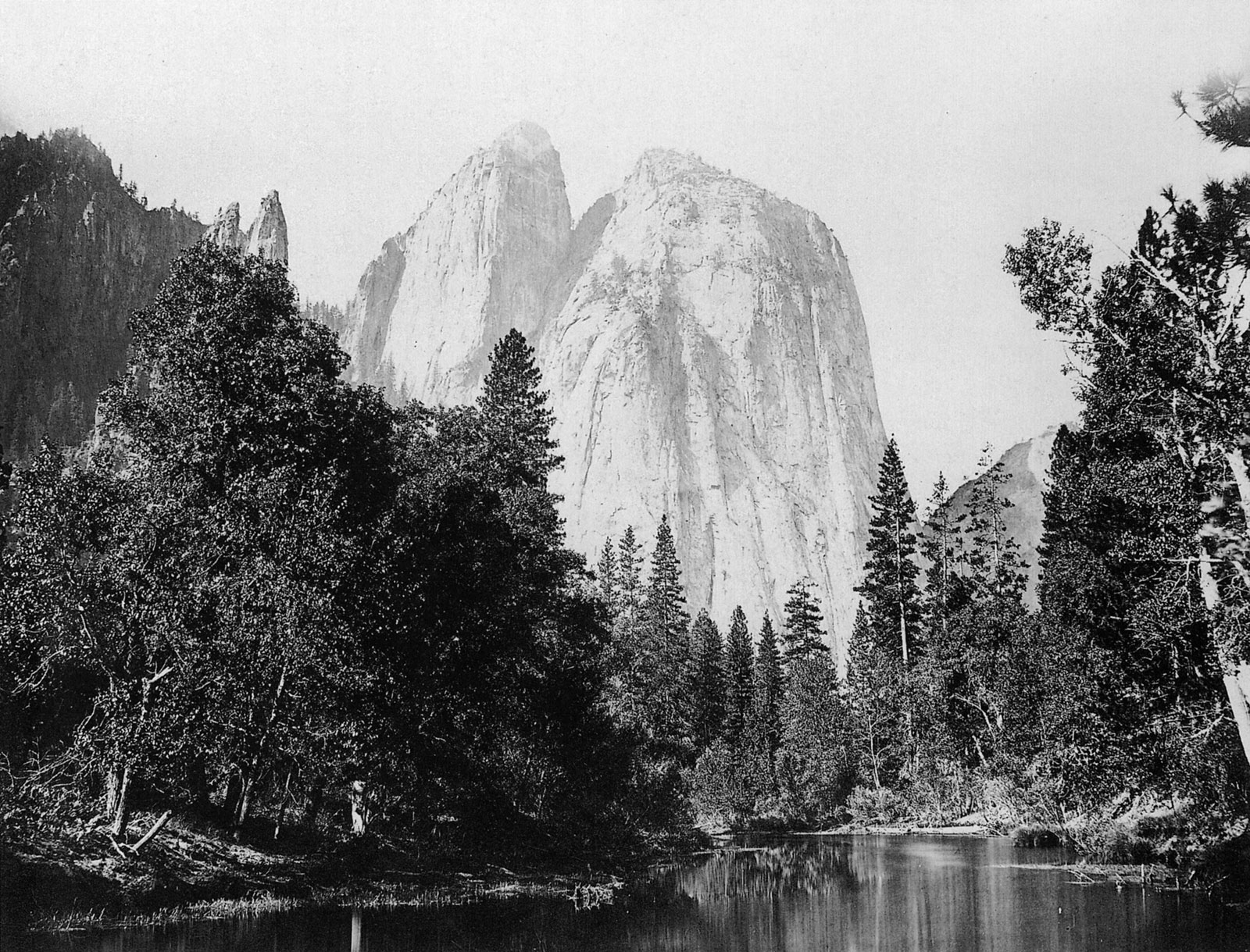


4. Andreas Gursky
In my experience, Gursky is often a tough sell to a new audience. Many encounter his work for the first time through a means that discusses his auction sales and then conclude that his work is Damien Hurst like, i.e., purely for the ‘market’, intended to make money with little artistic merit.
I implore any reader to look beyond the price tag and seek out an exhibition of his work before making a hard judgement.
I say this because the internet has a means to lessen the impact of a photographer’s work by limiting the viewing size to that of the device on which it appears. If you look at Gursky’s photograph of the Rhein on the same device you scroll Facebook on the toilet, the impact is lost. If however you find yourself in a gallery standing in front of a six foot print that takes up all of your peripheral vision, only then does the full force of his work land.
Gursky’s most notable influence whilst studying was from his teachers Hilla and Bernd Becher (definitely worth exploring their work further), the pair were best known for photographs that systematically catalogued machinery and architecture. Once seen the influence is most certainly notable, as is the desire to present in large scale similar to Watkins’ images of Yosemite, the scale of the photographs is arresting and they must be viewed in person.
“The first time I saw photographs by Andreas Gursky…I had the disorienting sensation that something was happening to me, I suppose, although it felt more generalized than that. Gursky’s huge, panoramic colour prints,…some of them up to six feet high by ten feet long,….had the presence, the formal power, and in several cases, the majestic aura of nineteenth-century landscape paintings, without losing any of their meticulously detailed immediacy as photographs. Their subject matter was the contemporary world, seen dispassionately and from a distance.” – Calvin Tomkins, The New Yorker



5. Hiroshi Sugimoto
Known as much for his architecture as he is for his photography, Sugimoto is too cool to miss off my list. Why? Because the work challenges what a landscape photograph can be and opens up new areas of conceptual photography to explore.
Take the ‘Theatres’ series for example.
The exposure length is determined by the length of the film/movie, I find in my own work it’s all too easy to keep thinking of photography in mechanical and logical terms, I find this way of thinking freeing, it gives me the space to ask questions about the medium and find ways to fall in love with it all over again.
Is an exposure 1/100th of a second, or can it be six hand claps?
In the Theatres series, Sugimoto explored how he could capture an entire movie in one photograph. This way of thinking brings fun back into creating, and in turn leads to unexpected results.
“One night I thought of taking a photographic exposure of a film at a movie theatre while the film was being projected. I imagined how it could be possible to shoot an entire movie with my camera. Then I had the clear vision that the movie screen would show up on the picture as a white rectangle. I thought it could look like a very brilliant white rectangle coming out from the screen, shining throughout the whole theatre. It might seem very interesting and mysterious, even in some way religious.”
In capturing every frame within the movie in a single frame, all that is left is a bright white screen, however it reveals something new and still maintains the sentiment of the film through the light it casts.
Optimistic movies create brightly lit scenes, dark and sinister films create dimly lit scenes. It is fascinating how in capturing everything, the photograph has recorded nothing.
Again, opening up avenues for further exploration. In my own work, how can I photograph something, and be left with nothing? In my view, great artists inspire, and I have always been left in awe and completely inspired by Sugimoto’s work.


6. Ansel Adams
Etched into every photographer’s psyche, no list would be complete without the godfather of landscape photography, Ansel Adams.
A legend of the genre, I first encountered his work as a teenager, being blown away by an image he took of a moonlit landscape in which he supposedly leant on his years of experience and assumed the exposure time, needless to say, it was perfectly exposed .
That depth of knowledge is something I have strived to achieve, being able to enter any scenario and be able to ‘see’ light as a camera would. Not only are his exposures technically brilliant, Adams’ work captures the raw nature of Yosemite, it’s beauty and it’s power all in a single frame.
The depth and range of tones in the images breathes life into the prints, when stood before them, they feel alive.


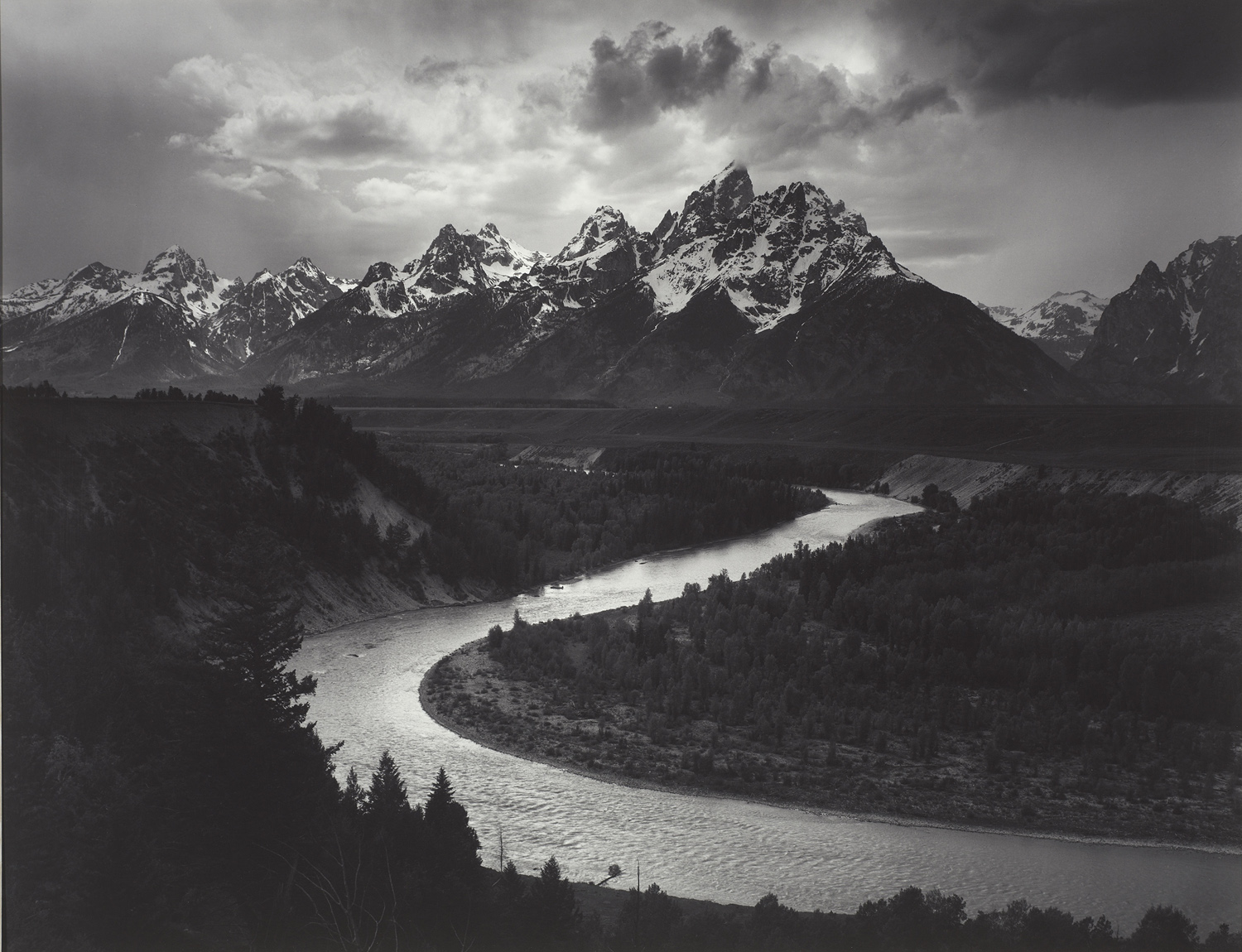
7. Edward Burtynsky
Much like those that have gone before him, Burtynsky is a conservationist at heart. He documents the earth, our relationship with it, and our destruction of it.
Whilst employing traditional techniques of a high vantage point and geometric compositions, his work encourages the viewer to consider their relationship with nature as our fates are entwined. Born in Ukraine, his desire to document the changing landscape and mankind’s impact upon it was ignited when he began to explore the General Motors factory and it’s affect on in his hometown.
“These images are meant as metaphors to the dilemma of our modern existence; they search for a dialogue between attraction and repulsion, seduction and fear. We are drawn by desire – a chance at good living, yet we are consciously or unconsciously aware that the world is suffering for our success. Our dependence on nature to provide the materials for our consumption and our concern for the health of our planet sets us into an uneasy contradiction. For me, these images function as reflecting pools of our times.”
Not a traditional landscape photographer, Edward Burtynsky is more a documenter of the earth. His images showing the effect of the human race on our planet are superb, and the level of detail captured in them is just staggering.




8. Valda Bailey
Bailey makes the list not only because her work is instantly alluring, but because it’s impossible to look at without wanting to try out yourself. Her work is truly inspirational as it makes me immediately want to pick up a camera.
A technique that has been honed over decades, her skill and knowledge of the medium shines through in her portfolio.
In a world of HDR landscapes, oversaturation and excessive dodging and burning, Bailey returns to a ‘purer’ interpretation of exploring the landscape, creating layers in camera. Showing hints of inspiration from abstract impressionism and post modernism to name but two, Bailey’s work is a sensory experience. Each image captures a notion or feeling, not focussing on the literal physical form, it creates a multisensory experience.
I also love Bailey’s work as it allows me access to the part of photography that I fell in love with in the beginning – the anticipation.
Waiting for film to come back from the lab, peeling open the packet to reveal the prints, oh how I miss that.
Working with digital, that sense of anticipation is largely removed.
However when you engage with an experimental process with multiple layers and multiple exposures, that sense of joy can be tapped into. What’s more, it can all be achieved without having to travel thousands of miles to a particular honeypot location like Yosemite, it encourages exploration of your local area and asks you to embark upon that most difficult of tasks, to see a familiar place as if for the first time.

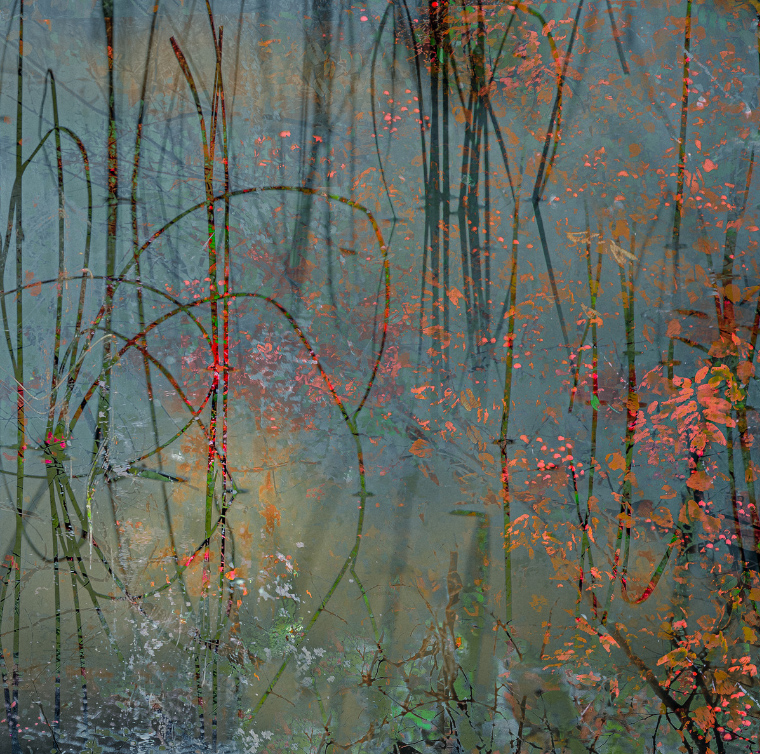

9. Ted Gore
There’s no escaping it, Gore’s work is Photoshopped. I contemplated not including him on this list because his work is so heavily edited and manipulated in post processing.
I must confess, it upsets the purist in me, however to deny the quality, vision and mastery involved in producing such images would be plain ridiculous.
As much as I don’t think I would employ these techniques myself, the camera is a tool, and there is no doubt that Gore is using it with an incredible degree of skill.
Gore goes into great detail explaining his process on the videos available on his website (they are paid though), he employs focus stacking, dodging and burning, FOV blending – techniques all made possible with Photoshop.
Is it photography, is it art, is it digital art? The arguments will rage on for an eternity. I ask myself, do I like it? The answer is yes, his images are stunning.
Much like Bailey’s work above, not all work will resonate with each individual in the same way, however that’s not to say that there isn’t something to be learnt from every piece of work we examine. The techniques that Gore uses may be worth practicing as they may lead to breakthroughs in your own work in an unrelated field of photography.
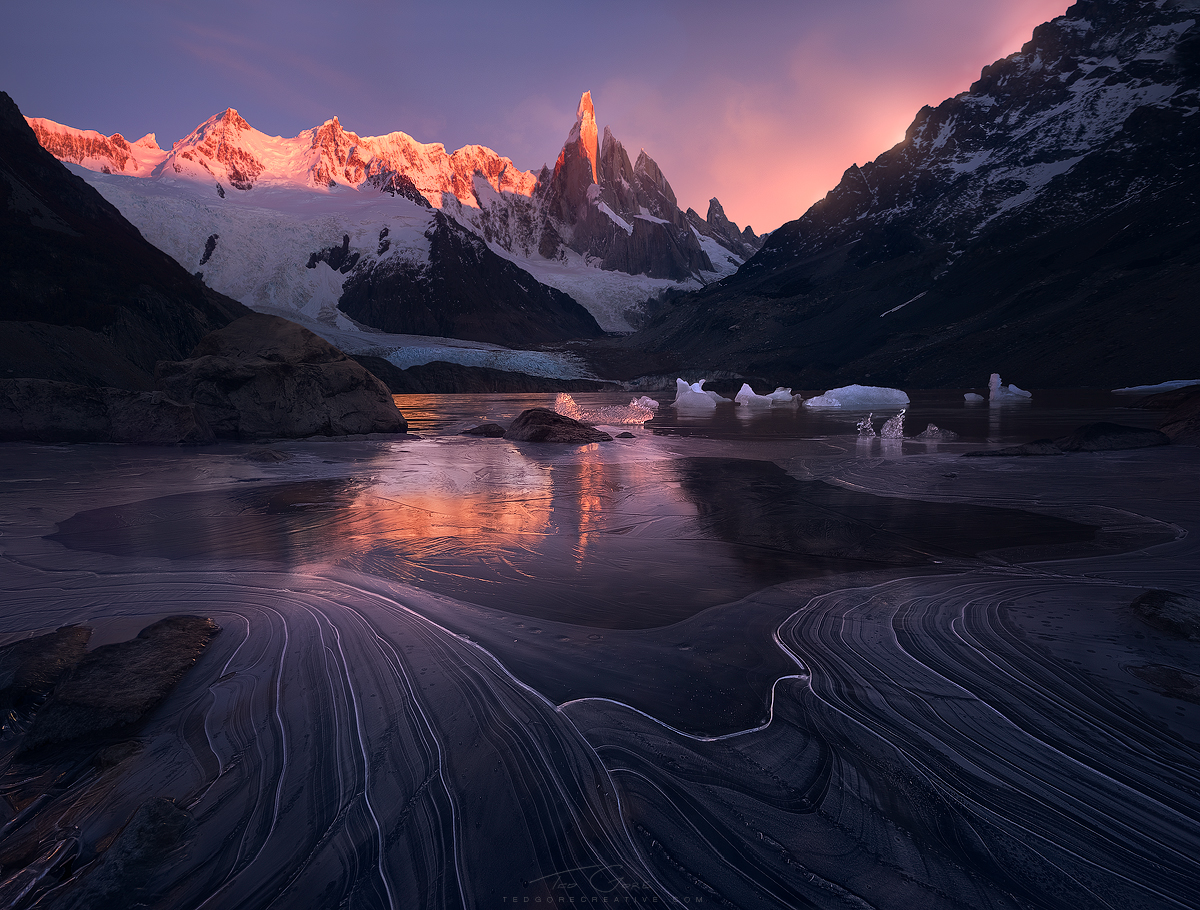

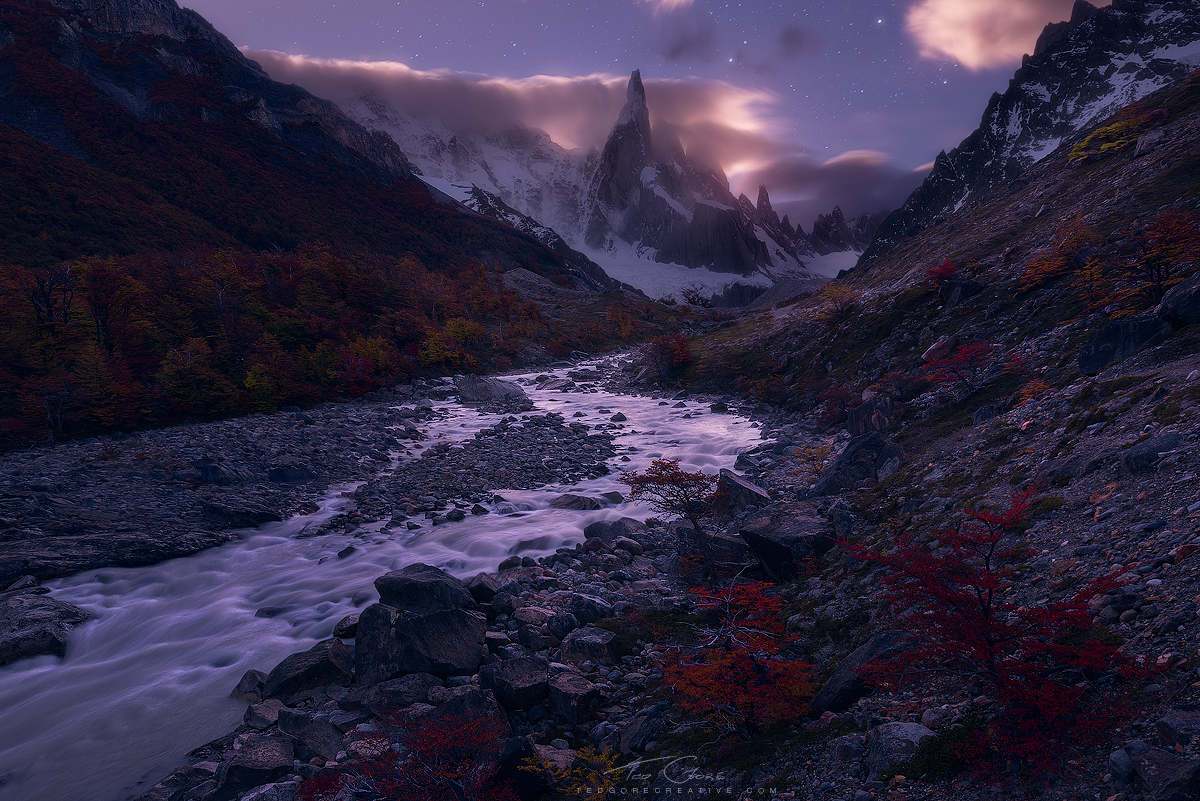
10. Guy Tal
Guy’s work is alluring to me purely for it’s celebration of natural beauty.
Fantastic composition and technical mastery shows the majesty of the world in its raw form. Working with patterns and structure, there is a delicate nature to his work, the eye moves easily across the images, creating a sense of stillness and calm.
I particularly admire how he is willing to explore the micro as well as the macro. When working in remote and dramatic locations, it can be easy to become fixated on capturing the scene as a whole. Some of my favourite pieces of his are the close up images of the land that focus on the smaller fragments that are as equally beautiful and intriguing as the landscape as a whole.



11. Max Rive
Another entry into the ‘is it digital art or photography?’ debate.
Once again, the skill and drama on show in Rives work leaves little doubt that regardless of what you want to call his practice, he is an outstanding executor of it. Let’s not kid ourselves, to achieve this look one must be willing to spend a considerable amount of time in the editing suite, Max’s educational videos regularly run three hours plus in order to teach what must have taken him thousands of hours to master.
I admire the bold compositions in his landscape photography, particularly the strength of his foreground. Trees, cacti, rocks – all used to excellent effect to draw the viewer’s eye into the image whilst simultaneously not being solely a compositional device, they maintain detail and interest all of their own.
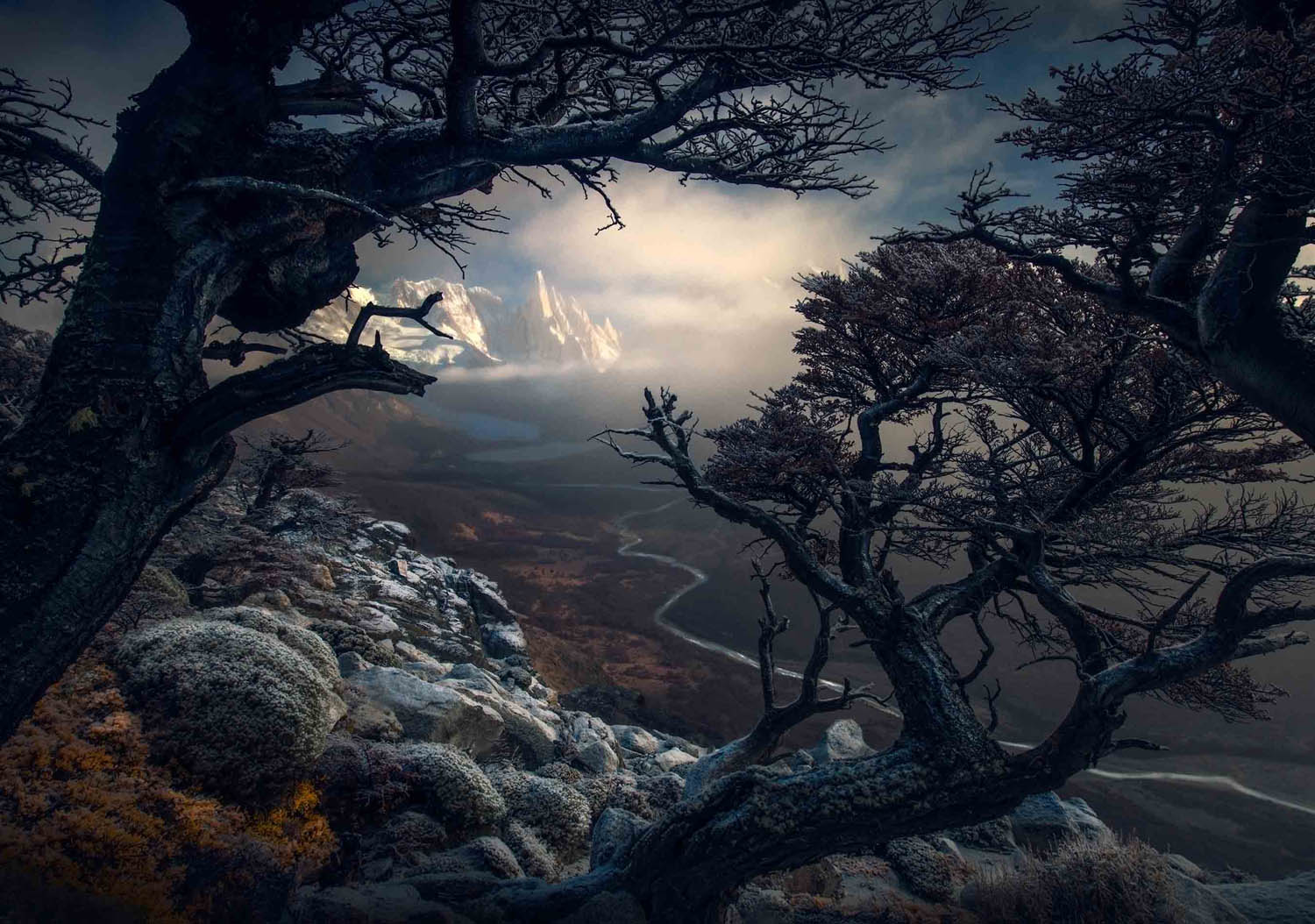
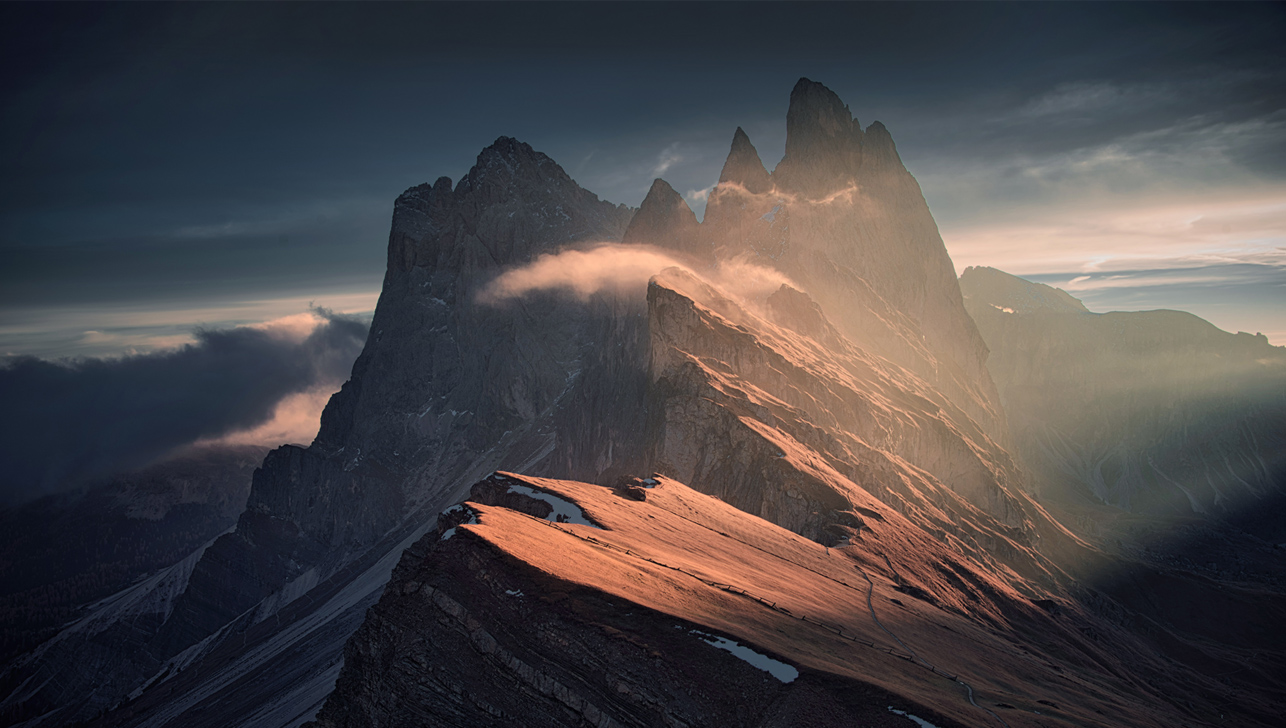
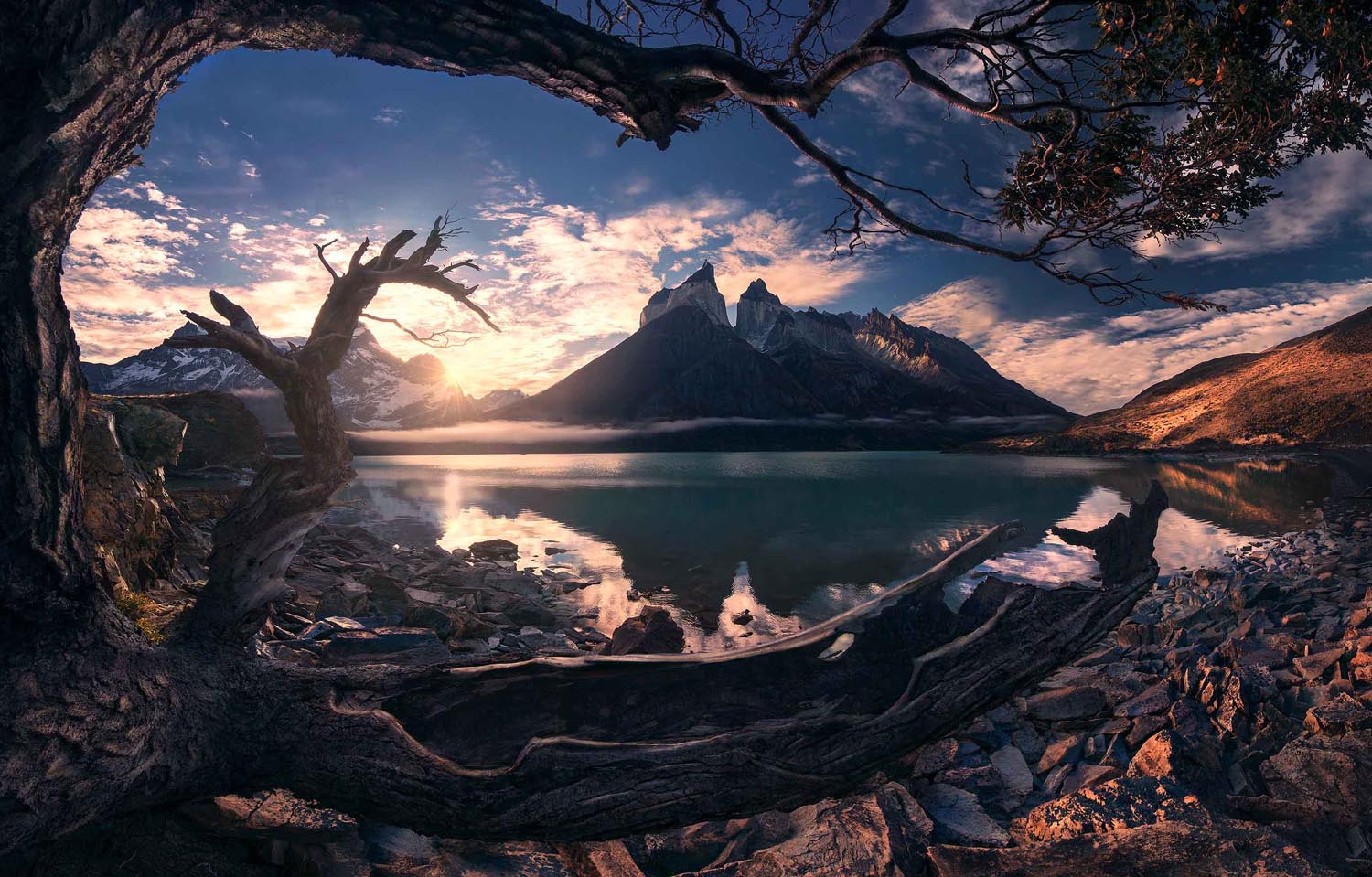
Now that I’ve come to the end of this best of who I think are the best landscape photographers of all time, I realise that there’s only one female photographer on this list of eleven. What’s more interesting to me however, is that Valda Bailey has a completely different approach to shooting landscapes than the other photographers that I’ve chosen. Valda focuses on the tactile nature of the image, the emotional connection. This is something that I’ve always longed to tap into in my own work, which makes sense as to why her work leaps out at me. I’m probably biased towards the more logical and technical elements of landscape photography, but I’m always thirsty for knowledge, so if you have any new names to throw into the mix, drop them in the comments below.
To your continued photographic success!
Liam
